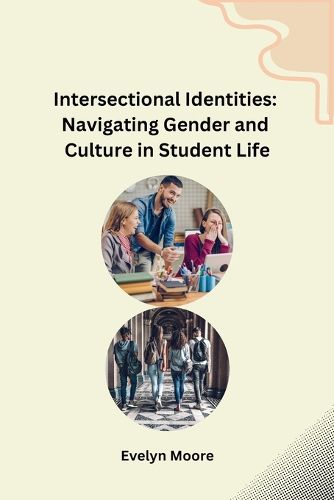Readings Newsletter
Become a Readings Member to make your shopping experience even easier.
Sign in or sign up for free!
You’re not far away from qualifying for FREE standard shipping within Australia
You’ve qualified for FREE standard shipping within Australia
The cart is loading…






This title is printed to order. This book may have been self-published. If so, we cannot guarantee the quality of the content. In the main most books will have gone through the editing process however some may not. We therefore suggest that you be aware of this before ordering this book. If in doubt check either the author or publisher’s details as we are unable to accept any returns unless they are faulty. Please contact us if you have any questions.
Intersectionality is a crucial concept that plays a significant role in navigating the complexities of gender and culture in student life. In this subchapter, we will delve into the depths of intersectionality, exploring its origins, principles, and implications for students in various cultural studies.
Intersectionality, coined by legal scholar Kimberle Crenshaw in the late 1980s, refers to the interconnected nature of social categorizations such as race, gender, class, and sexuality. It recognizes that these categories do not exist in isolation but intersect and interact with one another, shaping individuals' experiences and identities. By acknowledging the intersectionality of these various social dimensions, we can better understand and address the unique challenges faced by individuals who belong to multiple marginalized groups.
For students, understanding intersectionality is essential as it enables them to critically analyze social systems and power structures and recognize the ways in which different forms of oppression intersect. By recognizing the interconnectedness of various identities, students can better advocate for social justice, inclusivity, and equality on campus and beyond.
Furthermore, intersectionality can help students navigate their own identities and experiences. It allows them to recognize the complexity and diversity within themselves and others, encouraging empathy and fostering a sense of community. By acknowledging the ways in which different identities intersect, students can gain a deeper understanding of their own privileges and disadvantages, fostering a more inclusive and supportive environment for all.
Within the field of cultural studies, intersectionality is particularly relevant. It helps students critically analyze the interplay between culture, identity, and power dynamics. Through an intersectional lens, cultural studies students can examine how race, gender, and other social categories intersect to shape cultural practices, representations, and power structures. This understanding can lead to more nuanced and inclusive cultural analyses and interpretations
$9.00 standard shipping within Australia
FREE standard shipping within Australia for orders over $100.00
Express & International shipping calculated at checkout
This title is printed to order. This book may have been self-published. If so, we cannot guarantee the quality of the content. In the main most books will have gone through the editing process however some may not. We therefore suggest that you be aware of this before ordering this book. If in doubt check either the author or publisher’s details as we are unable to accept any returns unless they are faulty. Please contact us if you have any questions.
Intersectionality is a crucial concept that plays a significant role in navigating the complexities of gender and culture in student life. In this subchapter, we will delve into the depths of intersectionality, exploring its origins, principles, and implications for students in various cultural studies.
Intersectionality, coined by legal scholar Kimberle Crenshaw in the late 1980s, refers to the interconnected nature of social categorizations such as race, gender, class, and sexuality. It recognizes that these categories do not exist in isolation but intersect and interact with one another, shaping individuals' experiences and identities. By acknowledging the intersectionality of these various social dimensions, we can better understand and address the unique challenges faced by individuals who belong to multiple marginalized groups.
For students, understanding intersectionality is essential as it enables them to critically analyze social systems and power structures and recognize the ways in which different forms of oppression intersect. By recognizing the interconnectedness of various identities, students can better advocate for social justice, inclusivity, and equality on campus and beyond.
Furthermore, intersectionality can help students navigate their own identities and experiences. It allows them to recognize the complexity and diversity within themselves and others, encouraging empathy and fostering a sense of community. By acknowledging the ways in which different identities intersect, students can gain a deeper understanding of their own privileges and disadvantages, fostering a more inclusive and supportive environment for all.
Within the field of cultural studies, intersectionality is particularly relevant. It helps students critically analyze the interplay between culture, identity, and power dynamics. Through an intersectional lens, cultural studies students can examine how race, gender, and other social categories intersect to shape cultural practices, representations, and power structures. This understanding can lead to more nuanced and inclusive cultural analyses and interpretations